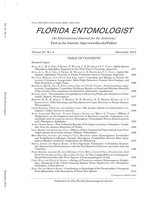The cactus moth, Cactoblastis cactorum (Berg) (Lepidoptera: Pyralidae), is a pest that threatens native Opuntia spp. in North America. Control tactics developed and implemented against this invasive pest successfully eradicated the moth in Mexico and on barrier islands in the United States. However, with the cancellation of the regional management program in the United States, no control tactics are being implemented to mitigate the expansion of the moth's geographical range. Hence, an integrated approach including biological control is proposed to regulate the population of C. cactorum in North America. Field surveys of the recently described parasitoid, Apanteles opuntiarum Martínez & Berta, were carried out within the C. cactorum native range in Argentina, and laboratory studies were conducted to develop a parasitoid rearing protocol. Apanteles opuntiarum was the most common parasitoid of C. cactorum and their field distributions were similar. In the laboratory, the parasitoid's reproductive success was maximized when one or two female wasps were exposed to 30 host larvae within a 500 ml container. Laboratory reared females were less successful at parasitizing hosts than field collected females. In spite of the success achieved with laboratory rearing, male bias was observed throughout the experiments. Because this bias might be related to the presence of the reproductive parasite Wolbachia, both laboratory colony and field collected individuals were screened and Wolbachia was detected. This study provides useful field and laboratory information on (1) laboratory rearing techniques for A. opuntiarum; (2) developing host specificity test protocols for studies under quarantine conditions; and (3) selecting parasitoid populations that best match the climatic conditions present in the C. cactorum invaded areas of North America.
How to translate text using browser tools
1 December 2014
Geographical Range and Laboratory Studies on Apanteles opuntiarum (Hymenoptera: Braconidae) in Argentina, a Candidate for Biological Control of Cactoblastis cactorum (Lepidoptera: Pyralidae) in North America
Carolina Mengoni Goñalons,
Laura Varone,
Guillermo Logarzo,
Mariel Guala,
Marcela Rodriguero,
Stephen D. Hight,
James E. Carpenter

Florida Entomologist
Vol. 97 • No. 4
December 2014
Vol. 97 • No. 4
December 2014
Apanteles
cactus moth
éxito reproductivo
field occurrence
parasitoid attack rates
polilla de la tuna
presencia en el campo




